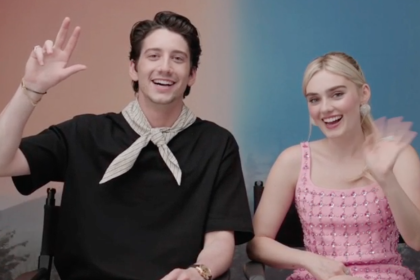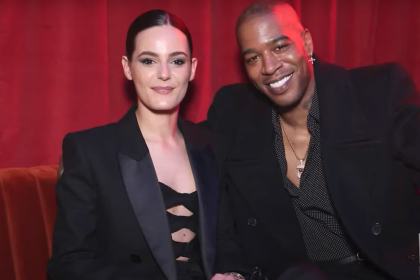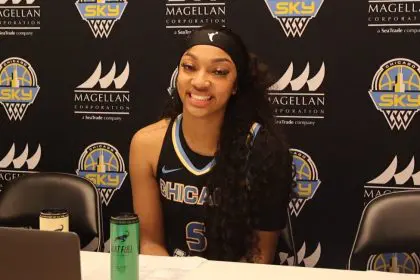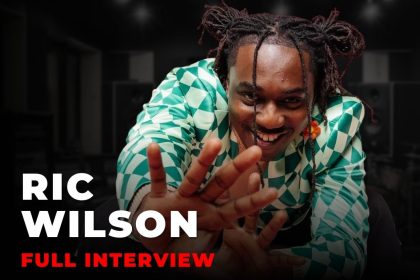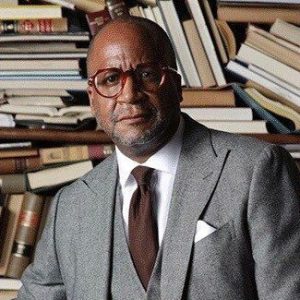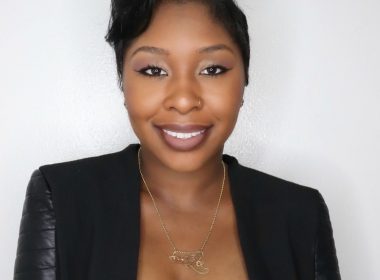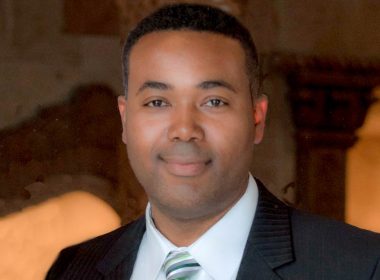
Stephen Flemister, mixed media artist
Krista Franklin, poet and visual artist
Recent work: “& the invisible, & the unbelievers”
Where: The South Side Community Arts Center
Do you most often actively seek inspiration or does it find you? Or is there a combination of the two?
Krista Franklin: Inspiration is a myth created to feed the romantic lure around artists and artistry. Art is thinking and labor. On good days my art is a perfect balance of study, thought and work, and I am an active participant in all three.
Stephen Flemister: My encounters with any inspiration are usually a combination of thought and observations.
What led you to art in general and to your art form(s) in particular?
KF: I have always been what I like to call a “creative.” From the time I was a little girl I have been active in writing and making things – drawings, photographs, poems, collages, paintings, doodles. I began to take it seriously in my 20s as a practice/ritual in my life. I was lead to my particular chosen artforms (collage, poetry, hand papermaking, and letterpress, to name a few) after seeing/reading/studying the work of certain masters who became important to me such as Sonia Sanchez, Amiri Baraka, William Burroughs, Romare Bearden, Hannah Hoch, Chuck D (of Public Enemy), Tupac Shakur and Toni Morrison (again, to name a few).
SF: I’ve always created things and developed exercises as a youth. In the absence of desired toys, I’d construct things from the most accessible materials available. I recall attempting to draw dollar bills, line for line, in an attempt to learn how much effort was involved in making something of value. It’s hilarious and amazing, at the age of eight, the effort I thought was needed to create $1. These practices are still a part of my work today with further development and focus.
Have you and your artistry ever been involved in traditional business? If so, how?
KF: Art and writing are traditional businesses to me. My collages have appeared on the covers of several books (a few that were award-winning published manuscripts). Additionally, my first chapbook of poetry was published by a small press (Willow Books, Detroit), and I have poems published in a few poetry anthologies.
SF: Earlier, I was convinced of business and art as two separate entities. For the longest I wished to pursue a “creative career,” but never thought of my making as a sustainable form of employment. As a full-time employee, I questioned my purpose when the respect I had for myself, my ideas, and efforts weren’t being met at my job. It became easier to believe, with support, that I could choose to have a creative career. Now I find that the business practices I’ve honed for years are applied throughout my creative practices in many ways.
In addition to mastering their art, what other skillsets do you recommend that artists develop if they want to be successful?
KF: Writing skills are critical. I don’t think enough can be said about reading and writing when it comes to not only the art world and art practice, but also life in general. I am a huge literacy advocate, and encourage all people (artists or not) to read avidly and to learn how to write properly as much as possible. Interpersonal skills don’t hurt either; knowing how to talk about what it is that you do, and being able to flow in varied and diverse environments is a great skill. Don’t stay in your comfort zones, ever.
SF: I would rank communication as one of the highest skills. This is one I grapple with the most. I also find that the skills of the latest technologies along with the skills of what I call “the archaic practices” to be an incredible advantage. All in all, any mastery to some degree along with vision can yield most incredible and successful outcomes.
How do you stay at the leading edge of your craft?
KF: One stays at the leading edge of their craft by knowing what’s currently happening in the field of their choice. If one is an artist or in the art business, one must consistently attend galleries and museums, and know the community of makers and tastemakers in your city. Exhibiting, performing, writing, etc. is one thing, but there is quite a bit to be said about knowing fellow artists and writers and creating a community around you. Again, the craft of (whatever your) art is work. Researching, building relationships and community, and doing your own work are the ways to stay on the leading edge.
SF: Continue with the practices until you run into errors, problems and confusion. Live within those complicated areas. Learn what causes the errors, problems and confusion, and if you make it to the other side you may find yourself at the leading edge when in conversation with others.
Do you think that there are any widely held misconceptions about art and/or artists? If so, what are they and how do you work to dispel them?
KF: Again, the most widely held misconception about art and artists is that they are “inspired” people who live a life of freedom and luxury. All of the artists and writers whom I know who are successful at what they do are some of the hardest working people that I know. Their work schedules do not go from 9am to 5pm. They are working constantly. They are working right now as you read this. They are not waiting for inspiration to strike. They are diligent and self-motivated and constantly on the grind to make their careers happen. I personally work to dispel these misconceptions by being a hardworking artist and writer. I work hard, and I also play hard. (smile)
SF: I think “art” is this wonderful opportunity to really question any and everything. I want to believe our notions of art reflect our interactions with query. Whether a painter wishes to question which shade of red combined with another color creates light on a pedal of a rose, or whether there is a working knowledge, physical muscle memory, of any labor that yields a specific outcome when applied to a particular circumstance. It’s great at times to think of the “misconceptions” (or the outright disapproval) of our personal ideas about art. It enables us to question and have an opportunity to be introduced to new perspectives. How else is one’s mind blown? It sure isn’t from all of us reading and writing the same definition for the same experience.

